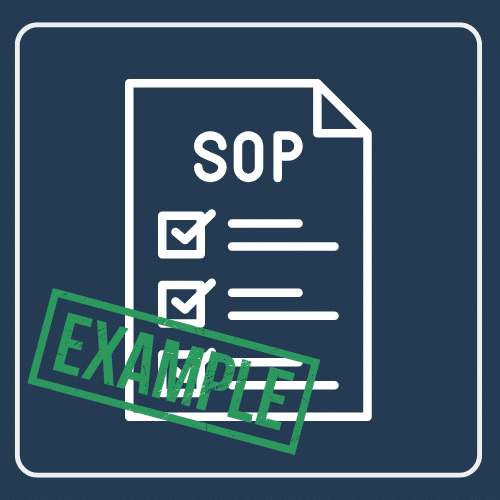Guide to SAP Treasury and Working Capital Management (TWCM)
Discover how to optimize cash and working capital management with SAP Treasury and Working Capital Management. A complete guide to controlling your cash flow.
You are here :
Introduction to SAP Treasury and Working Capital Management
Cash flow leaks. WCR explodes. Decisions come too late.
At a time when market volatility and regulatory pressure are accelerating, finance departments can no longer make do with Excel and disconnected tools. They need a clear, real-time view of every euro coming in or going out.
This is exactly where SAP Treasury and Working Capital Management (TWCM) comes in: a module designed to centralize cash management, streamline payments and turn cash flow management into a strategic lever.
More than just tracking cash, TWCM reduces risk, strengthens collaboration between finance and operations, and above all informs decision-making in an environment where every minute counts.
Defining the solution in the SAP ecosystem
SAP Treasury and Working Capital Management is a central module in the SAP S/4HANA Finance offering. Its role is to link treasury, payments and working capital management to the entire financial information system.
In concrete terms, this is not an isolated tool, but a brick integrated into the ERP system, interacting with general accounting, management control, purchasing (SAP Ariba) and analytics (SAP Analytics Cloud). This native integration avoids silos, makes data more reliable and speeds up the flow of financial information.
TWCM is therefore not an additional "layer", but a natural extension of ERP, designed to provide a single view of cash and financial commitments. This makes it an ideal solution for both finance departments and operational teams.
Objectives of cash and working capital management
Cash blocked. Scattered payments. Decisions based on incomplete data. This is the daily reality for many finance departments.
The aim of cash and WCR management is twofold:
- Ensuring liquidity in the short term, by anticipating financing needs.
- Optimizing the operating cycleby reducing capital tied up in inventories, receivables and payables.
In practice, this means anticipating cash flows, securing payments, reducing settlement times and identifying cash release levers. The role of SAP TWCM is precisely to make these mechanisms visible and actionable in a single environment.
The aim is clear: to transform cash flow into a lever for growth rather than a constraint.
Why integrate this module into your financial strategy?
Companies equipped with multiple isolated tools always end up losing their responsiveness. Between manual reconciliations, consolidation delays and the risk of errors, the finance department often finds itself lagging behind the reality on the ground.
By integrating SAP Treasury and Working Capital Management, financial strategy gains three decisive advantages:
- Centralization flows for an instant view of available cash.
- Standardization processes, limiting risk and accelerating compliance.
- Precision forecasts thanks to real-time access to operational data.
It is this foundation that enables companies to move from reactive to proactive cash management, turning cash management into a genuine strategic management tool.
Key components of SAP Treasury and Working Capital Management
SAP TWCM is not a monolithic block. It's a set of sub-modules covering the entire cash and current capital cycle. Each of them meets a specific need, but once connected, they offer an integrated vision of financial flows.
These six components form the backbone of SAP TWCM: each provides an operational building block, but it is their combination that creates a strategic, actionable vision of treasury.
Key features for controlling your financial flows
Beyond the modules, it's the concrete functionalities that are transforming the way a finance department manages its flows. With SAP TWCM, each lever is based on real-time data, to move from a monitoring logic to a steering logic.
Real-time cash flow forecasting
Manual forecasts always end up being obsolete. Here, banking, accounting and operational flows are automatically fed into the cash flow forecast. The result: a dynamic and reliable view of available cash, constantly adjusted to actual movements.
Centralization of inter-company payments and transfers
Instead of managing dispersed payments in each subsidiary, the module consolidates everything via a single payment platform. Intercompany transfers are simplified, and the parent company retains control over the group's liquidity.
Automated bank reconciliations
At the end of each month, bank reconciliation takes up hours of team time. Integrated automation reconciles accounting entries and bank statements in near-real time. Fewer re-entries, fewer errors, and faster closing.
Dynamic reporting and analytical dashboards
Financial managers no longer want to wait for static reports. With interactive dashboards, every indicator - cash flow, currency exposure, debt - can be monitored in real time and shared with decision-makers. A shift in date or geographical zone, and the view updates instantly.
Native integration with SAP S/4HANA Finance
The decisive advantage: the solution is native to SAP ERP. No complex gateways, no re-keying. Financial data flows freely between treasury, accounting, purchasing and controlling. This enhances both reliability and decision-making speed.
These functionalities are not just technical: they change the way financial teams think, giving them the power to act on flows rather than being subjected to them.
Benefits of SAP Treasury & Working Capital Management for companies
Cash doesn't wait. Spreadsheets do.
Here's the real discrepancy: while your forecasts are still being consolidated, the financial reality has already changed. The result: delayed decisions, poorly covered risks, and lost opportunities.
SAP TWCM breaks this time lag. It doesn't just show the past, it projects the present.
Full visibility of financial flows and cash flow
An Excel file is never aligned with your banks, purchases and sales. TWCM brings these flows together in a unique, lively view. Each movement updates the cash position. No more "blind" arbitrages: the finance department knows where it stands, down to the minute.
Reduced financial and currency risks
A currency mismatch can wipe out a margin in a matter of hours. Most companies discover this too late. TWCM detects these exposures, simulates their impact and proposes hedges. Risk is measured before it is taken.
Better decision-making thanks to real-time data
Finance is not an exact science. But it is becoming a fast-moving science Instant simulation of a loan, investment or payment. Decisions are no longer postponed until the end of the month: they're made as soon as the cash moves.
Operational efficiency gains and regulatory compliance
Teams are not meant to re-enter bank statements. They need to analyze. TWCM automates reconciliations, validations and controls. Fewer errors, more compliance. Value doesn't come from clicks, it comes from insight.
👉 The real advantage? Transforming cash flow from a constraint center into a strategic engine.
Integration with other SAP modules
An isolated module is a dead module.
The real strength of SAP TWCM is not that it's just another tool. It's being plugged into the heart of the ERP system. Every piece of accounting data, every supplier order, every analytical report becomes a piece of the financial puzzle.
It is this integration that transforms treasury into a strategic cockpit.
SAP S/4HANA Finance and Controlling (FI/CO)
Financial flows don't live alone. Every customer invoice, every accounting entry, every cost center feeds directly into the cash vision. With TWCM, there's no time lag: what's booked is immediately visible in the cash flow. No more double entry, no more delays.
SAP Ariba for supplier cycles
Cash flow isn't just about banking, it's also about negotiation. By integrating SAP Ariba, TWCM makes it possible to link supplier payment terms and conditions to liquidity projections. In other words, purchasing decisions have a direct, visible cash impact.
SAP Analytics Cloud for advanced financial management
The CFO needs more than just a cash table: he needs scenarios. Thanks to integration with SAP Analytics Cloud, cash flow data is fed into predictive models. The result: liquidity impact simulations, WCR forecasts, multi-scenario analyses. Cash flow is no longer retrospective, but forward-looking.
👉 When finance, purchasing and analytics speak the same language, cash flow stops being a bottleneck and becomes a lever for growth.
Best practices for deploying SAP Treasury Management
The classic trap? Treat SAP TWCM implementation as a simple IT project.
The result: an under-used tool, a shaky adoption, and a finance department that continues to tinker with its Excel files.
Successful deployment means doing the opposite: involving finance, defining processes and training the right people from the outset.
Involve finance and IT departments right from the scoping phase
Too many implementations are carried out by the IT department alone. Miscalculation. TWCM is a CFO tool, not just a technical issue. The finance department needs to set its priorities right from the start: visibility, risk reduction, automation.
The IT department guarantees integration, security and cloud compliance. The CFO-ISD duo is the key to the project's survival.


Rely on standard processes and pre-configured templates
Classic mistake: trying to customize everything. Every exception becomes a specific development, and every evolution costs a fortune.
SAP provides packaged best practices: cash pooling, bank communication, debt management. Relying on these means reducing implementation times and benefiting from what already works elsewhere. The real differentiation lies not in the basic parameterization, but in the ability to exploit the data generated.
Train key users and secure project governance
A poorly-used tool remains a gadget. Success depends on the key users: those who translate the business need into concrete rules in the system. Without them, finance will fall back on its spreadsheets.
Training also means empowerment: who validates payments? Who monitors currency risk? Who uses the analytical reports? Governance must be clear from the outset, otherwise every incident becomes an internal war.

Pragmatic bonus: start small, expand later
Many want to deploy everything in one block: cash, payments, debts, risks. Not a good idea. Successful projects are often progressive: start with cash and payments, stabilize, then add the risk and WCR bricks.
This pace creates confidence internally and shows value quickly, rather than waiting 18 months for a "big bang" that never arrives.
👉 In short: finance and IT hand in hand, standards before custom, key users empowered, progressive deployment. It's this discipline that transforms an SAP TWCM project into a strategic lever, rather than a gas factory.
Cash flow is the truth of business. No matter the sales, no matter the growth: if there's no cash flow, everything grinds to a halt.
SAP Treasury and Working Capital Management is more than just a monitoring tool. It's a nervous system that connects banking, accounting, purchasing and forecasting to give financial management a clear and immediate view.
TWCM takes finance out of reactive mode. It anticipates, alerts and guides decisions. It's this transition, from data entry to management, that makes the difference between cash flow that's under pressure and cash flow that's strategic.
The next step? See TWCM not as a technical project, but as a transformation of the very role of the finance function.

